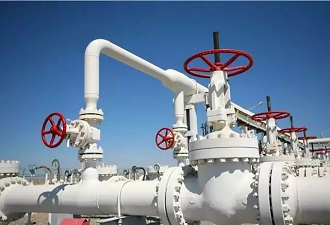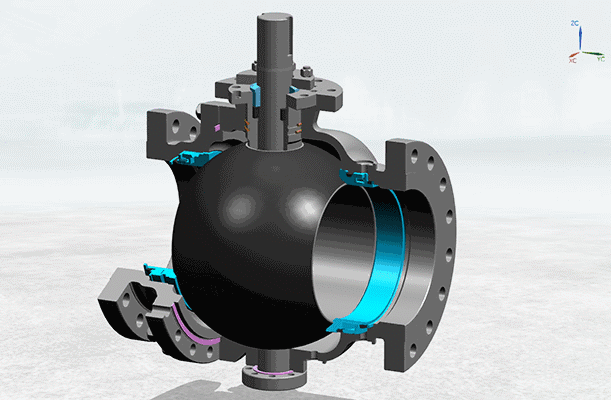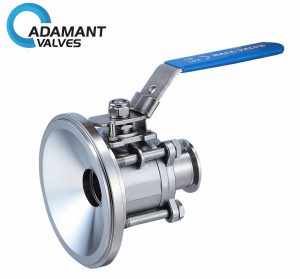The Difference Between Ball Valves and Butterfly Valves

What is the difference between a ball valve and a butterfly valve?
The biggest difference between sanitary ball valves and sanitary butterfly valves is that the opening and the closing component of the butterfly valve is a plate, while the opening and closing member of the ball valve is a ball. The valve plate of a butterfly valve and the valve core of the ball valve both rotate around their own axis. The valve plate of the gate valve moves along the axis in lift movement. The butterfly valve can also adjust the flow rate by opening partially, but the ball valve does not have this function.
What is a Butterfly Valve?
The butterfly valve is characterized by a relatively fast opening and closing mechanism and simple, cost-effective construction. However, butterfly valves have relatively poor sealing tightness and low-pressure capacity, both of which limit the valve’s scope of applications. The characteristics of the ball valve are similar to those of the gate valve, but with limitations to the opening diameter due to the restrictions on size and opening/closing resistance.
What is a butterfly valve used for?
The structural mechanism of the butterfly valve makes it particularly suitable for the production of a large diameter valve. The butterfly plate of the butterfly valve is installed in the diameter direction of the pipeline. In the butterfly valve body cylindrical channel, a disc-shaped butterfly plate rotates around the axis with a rotation angle between 0 and 90 degrees. When it reaches the 90th degree, the valve is in fully open status, and the adjustable range is relatively generous.
What is a ball valve?
Ball valves are named for their closing member, which is a sphere. The sphere rotates around the centerline of the valve body to achieve opening and closing. Ball valves are used in pipelines to shut off, distribute and change the flow direction of the medium.
What is a ball valve used for?
The ball valve is usually suitable for liquids and gases that don’t have particulate impurities. Ball valves operate with a small fluid pressure loss and good sealing performance. In comparison, the ball valve’s sealing tightness is better than that of the butterfly valve. Ball valves seal themselves by pressing the valve seat against the sphere’s surface. Compared with semi-ball valves, the ball valve wears down more quickly.
The butterfly valve’s sealing components are usually made of flexible materials, which are difficult to use in pipelines of high temperature and high pressure. The butterfly valve has rubber sealing components that don’t create as tight of a seal as the hard metal components of ball valves. After a long period of use, a semi-ball valve’s valve seat will have slight wear. We can continue to use it through adjustment. During the opening and closing process, the valve stem only needs to rotate 90 degrees. When there’s a leak, press the bolt on the stuffing lid a little bit tighter to reduce leakage.
How to Use Ball Valves and Butterfly Valves?
During the opening and closing process, the ball valve is operated by the force from the valve seat at both ends. It has a bigger opening and closing torque than the semi-ball valve. The greater the diameter, the more obvious the difference of opening and closing torque is.
The opening and closing of the butterfly valve are achieved by overcoming the deformation of the rubber sealing surface. Its torque is much greater, it takes a long time to operate, and requires much effort to do so.






